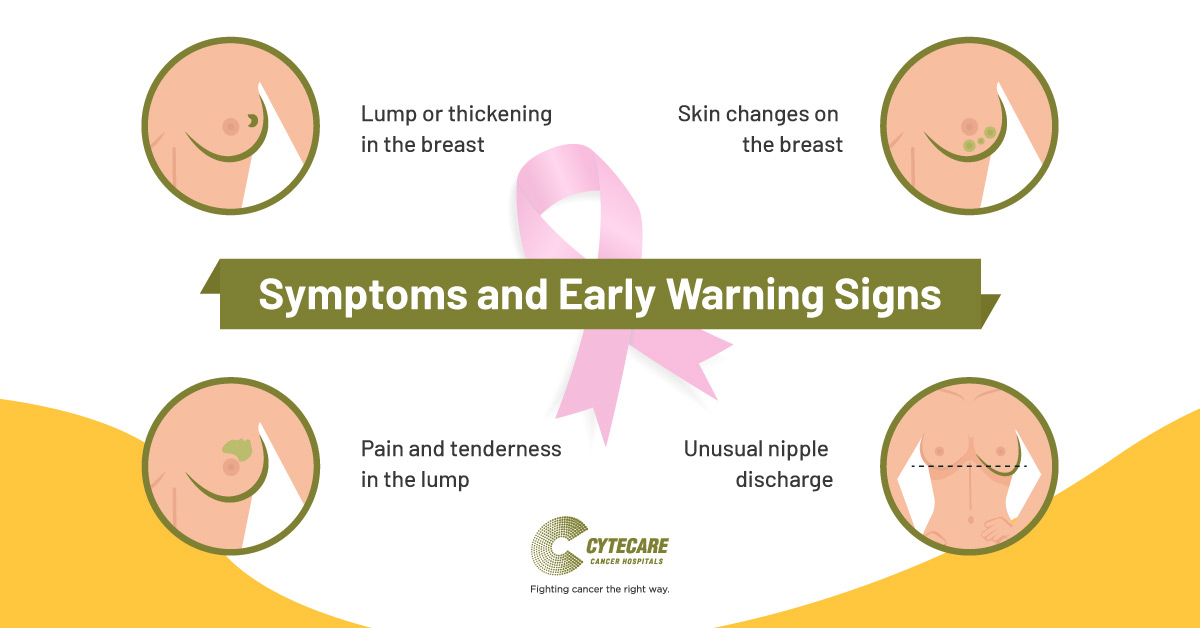
Author:
Dr. Ajay Rao P, Consultant – Radiation Oncology
Are we ready to adopt ultra-hypofractionation Fast Forward trial which has had a big impact on Breast cancer radiation?
Adjuvant Radiation therapy for breast cancer has come a long way since the 1980s, and there are now clear guidelines for radiation in breast cancer.
In the early 1980s and 1990s, with Danish 82B, 82C and British Columbia trials, radiation used to be given to all mastectomy patients with T3 diseases, more than 4 positive lymph nodes and to all the patients undergoing breast conservation surgery based on meta analysis of 6 major phase-3 trials comparing mastectomy only with breast conservation plus Radiation, clearly proved the benefit of local radiation.
Traditionally radiation was delivered to the breast in conventional fractionation of 1.8 Gy to 2 Gy per fraction and over 5 weeks with 50 Gy as the adjuvant dose for microscopic disease post-surgery.
Fractionation is the process of delivering radiation over small increments to achieve the total dose for tumoricidal effects.
Conventional fractionation is arrived at by linear quadratic model in which the alpha by beta ratio for tumour cells is 10, and the alpha by beta ratio for normal tissues is 3. Now the balance between the doses to the tumour kill and the normal tissue toxicity depends on the alpha beta ratio for the tumour and it is best managed if you keep the fractionation to 1.8-2 Gy per fraction.
Hypofractionation
Hypofractionation is the process of delivering the doses per fraction in more than 2Gy (such as a 2.67 per fraction – 40 Gy in 15 fractions – and completing the treatment in 3 weeks instead of 5).
There are certain cancers like breast cancer and prostate cancer that have an alpha beta ratio, which determines the primary and the secondary kill that is equivalent or lesser than that of the normal tissues which is 3. (Prostate cancer has an alpha beta ratio of 1.5 and breast cancer has an alpha beta ratio of 3-3.5). So, the tumour cells represent an alpha beta ratio of 10, while normal tissue represents an alpha beta ratio of 3. And the balance between the tumour tissue to normal tissue and the dose depends on the alpha beta ratio.
Breast cancer is one among various diseases where the alpha by beta ratio is assumed to be between 3 and 3.5 and here the hypofractionation can be explored without much toxicity in the late responding normal tissues, and we can get away with late toxicity. So, this is the rationale behind incorporating hypofractionation in breast cancer.
So the interest in this regard goes way back to Canada in early 2000s, where Timothy Whelan and group tried to do a hypofractionation schedule, and it was a phase 3 trial with lesser patient recruitment because it was a single institutional study and it came up with a hypofractionation schedule of 42.5 Gy in 16 fractions. The objective was to reduce the 25-day fractionation to 16-day fractionation regimen.
It was found that the results were extremely satisfactory with no compromise in the disease-free survival or the overall survival, and also there was no superiority in the toxicity, so it was a non-inferior trial. And It proved well beyond doubt that we could incorporate hypofractionation.
This was a single institutional study and required more evidence. So, the UK came up with a hypofractionation schedule with START trials called START A and START B trials which they ran from 2004 to 2007. And the START B trial was a phase-3 trial, that involved more than 2000 patients who were evaluated with a standard fractionation of 50Gy 25 fractions compared to 40Gy in 15 fractions with the objective of reducing the radiation from 5 to 3 weeks. This was termed as moderate hypofractionation and the result at 5 years was extremely satisfactory.
The results of START B trial matched the Timothy study, and there was no difference between the overall survival or the local, regional recurrence and the ipsilateral breast tumour recurrence rates (IBTR) compared with the experimental arm. And surprisingly the result of the late toxicities including increased telangiectasia, breast edema and breast fibrosis were not present in the hypofractionation arm, there was a better outcome compared to the standard fractionation.
So this clearly again set a benchmark that hypofractionation can be a major changeover in breast cancer treatment. However, radiation oncologists were skeptical about it and because it was only 5-year data, and they were not ready to jump into the hypofractionation protocol yet. They waited for the 10-year outcome that came in 2014, which reiterated the same results as the 5-year outcomes of the Start B trail. Almost the whole world changed with moderate hypofractionation of 40 Gy in 15 fractions as the standard of care. At Cytecare, we also follow moderate hypofractionation.
However, now the UK tested extreme hypofractionation or ultra-hypofractionation, which reduces the treatment from 15 to 5 days. So, they came up with 2 major landmark trials called the Fast and the Fast Forward trials. They were aimed at comparing the hypofractionation schedules in an extreme way, that is aimed to finish the treatment in 5 days as against 15 days of moderate hypofractionation.
There were basic differences between the Fast and the Fast Forward trial. Fast trial incorporated radiation, which was 5 fractions, but it was not delivered every day. It was a weekly schedule, so Fast trial was proposed for 30 Gy in 5 fractions, but it was a weekly schedule with a single fraction in every week for 5 weeks, and it was compared with standard fractionation of 50 Gy in 25 fractions.
The patients included were the low-risk cases: the patients recruited were more than 50 years, and the tumour sizes were less than 3 cm, node negatives were included here, and node positives were excluded, no supraclavicular or IMN radiation was permitted here and traditionally ER-positive, which is a very good disease, was included. Invasive carcinoma had to be proven, so basically, the Fast trial was more of a conservative early breast cancer with favourable risk patients, which were compared to the standard fractionation.
The Fast Forward trial was similar to the Fast trial, but here the radiation was delivered every single day for 5 days so the total treatment time would be only a week and they would be continuously taking treatment for 5 days which was around 26Gy in 5 fractions and another arm with 27Gy in 5 fractions, which was compared here to the moderate hypofractionation of Start B trial, which was 40Gy in 15 fractions.
So the traditional difference between Fast and Fast Forward is that Fast actually compared with the standard fractionation as the control arm and Fast Forward compared with the moderate hypofractionation which has already become the standard of care from 2014 as the control arm.
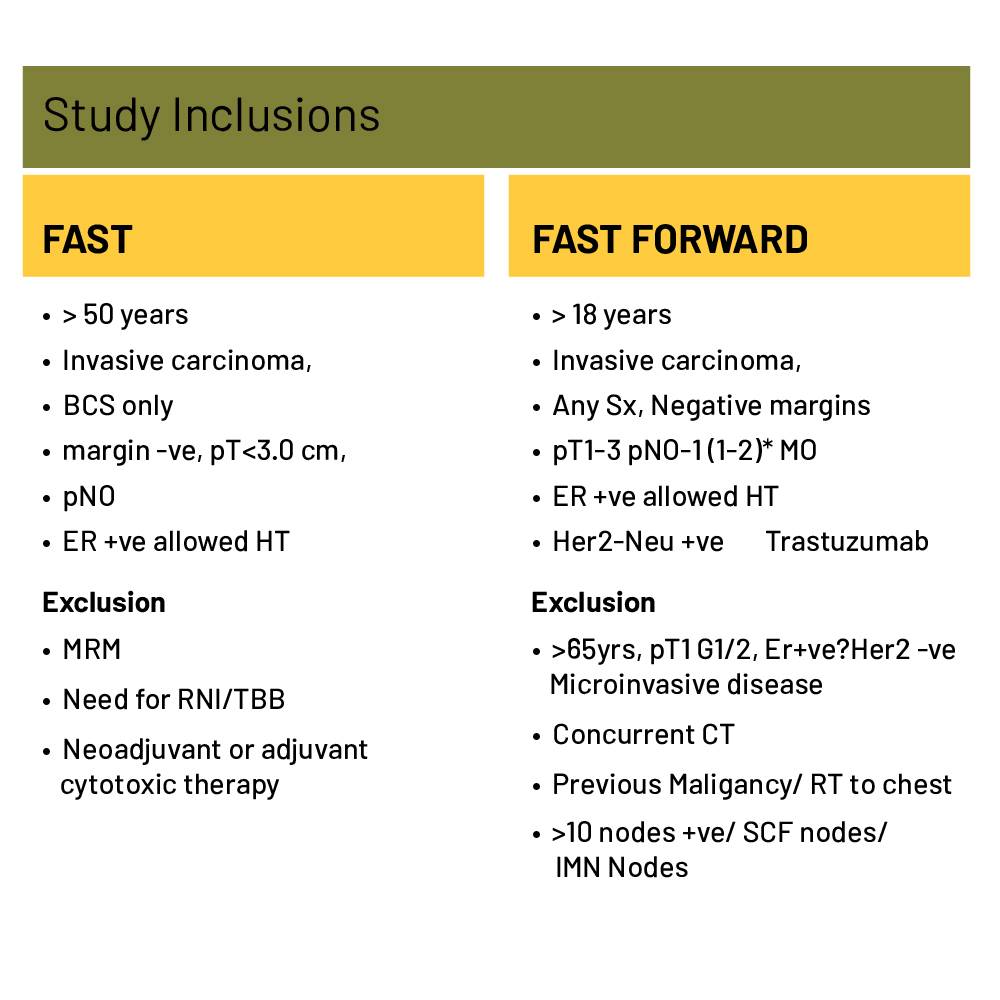
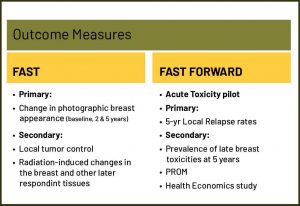
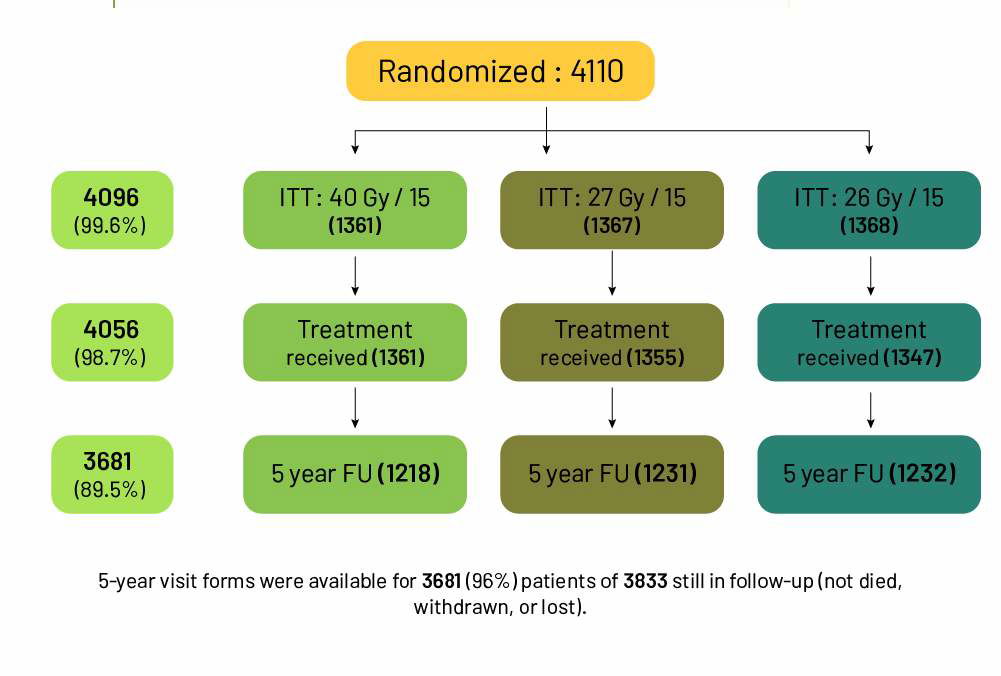
And Fast Forward used more of the high-risk cases, where –
- Mastectomy was permitted
- The triple negatives were taken into consideration – 9% of the patients were triple negative
- HER2 positives were permitted
- Node positives were permitted
However, irradiation for supraclavicular and IMN was not permitted in this study.
So Fast Forward studies came up with the results where the treatment finished within 5 days, and the initial results of 5 years are now available. If you look at the primary endpoint, which looked at the toxicities where the Fast Forward trial had 2 primary end points of ipsilateral breast local recurrence and also the acute and late toxicities as the end point. However, the secondary endpoint also incorporated disease free survival and overall survival.
The Fast Forward trial was a large series with 1200 patients in all of the 3 arms –
- The first arm was the control arm with 50 Gy 15 fractions
- The second arm compared 27 Gy in 5 fractions and
- The third arm compared 26Gyin 5 fractions
It was a well-balanced trial with the intent to treat hypothesis, and the results were extremely good because the ipsilateral breast tumour recurrences(IBTR) were 2.1% at the end of 5 years in 40 Gy 15 fractions control arm while the ipsilateral breast tumour recurrences were just at 1.4% and 1.7% respectively, with 27Gy and 26Gy arms with 5 days.
It proved that local recurrence not only matched but it was slightly better and statistically significant, and it clearly proved non-inferiority.
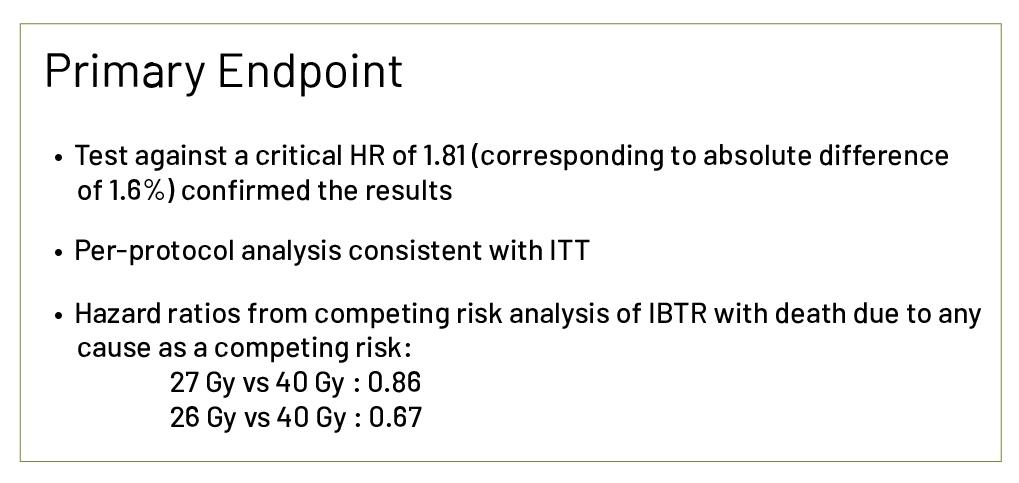
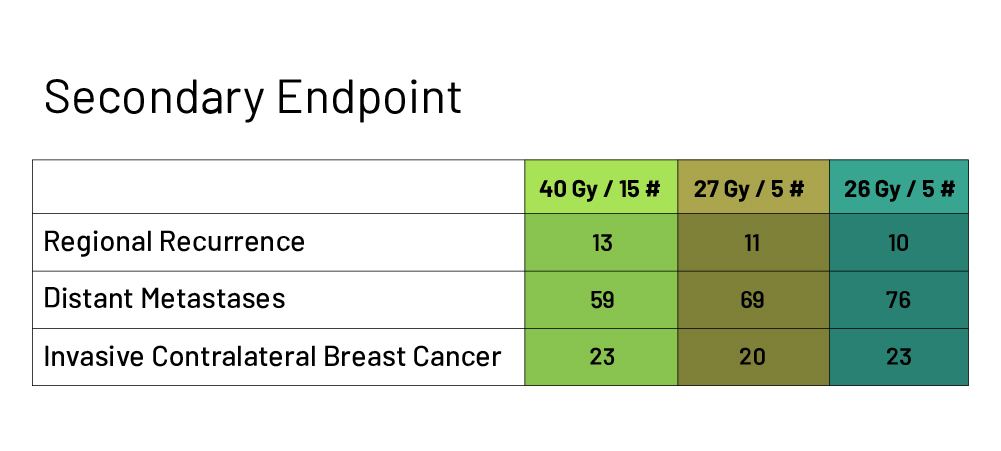
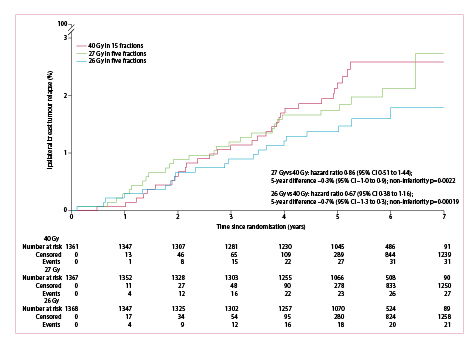
Talking about acute toxicities, if you compare with grade 1, grade 2 and grade 3 toxicities of RTOG and CTCAE, both arms with 40Gy 15 fractions control arm and the Fast Forward arm matched, and there were hardly any acute toxicity differences.
In fact, the late toxicity was much lesser, and the breast edema, the breast fibrosis, the breast pain and telangiectasia, every single factor was better in the 5-day arm compared to the 15-day arm. So, it clearly had an advantage.
Hence hypofractionation can be incorporated easily without any skepticism of late toxicity or long-term toxicities.
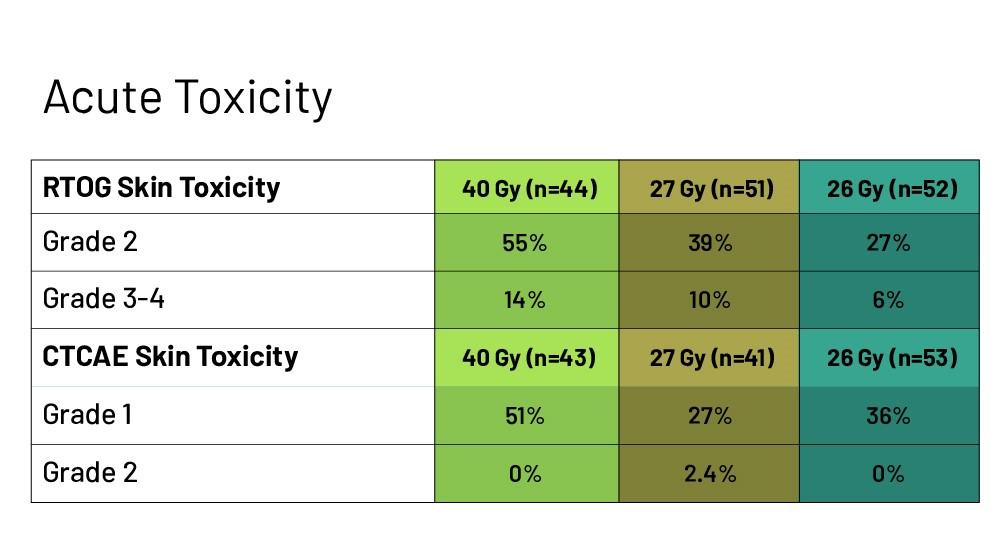
Brunt AM, Wheatley D, Yarnold J, Somaiah N, Kelly S, Harnett A, et al. Acute skin toxicity associated with a week schedule of whole breast radiotherapy compared with a standard 3-week regimen delivered in the UK FAST-Forward Trial. Radiother Oncol. 2016 Jul;120(1):114-8.
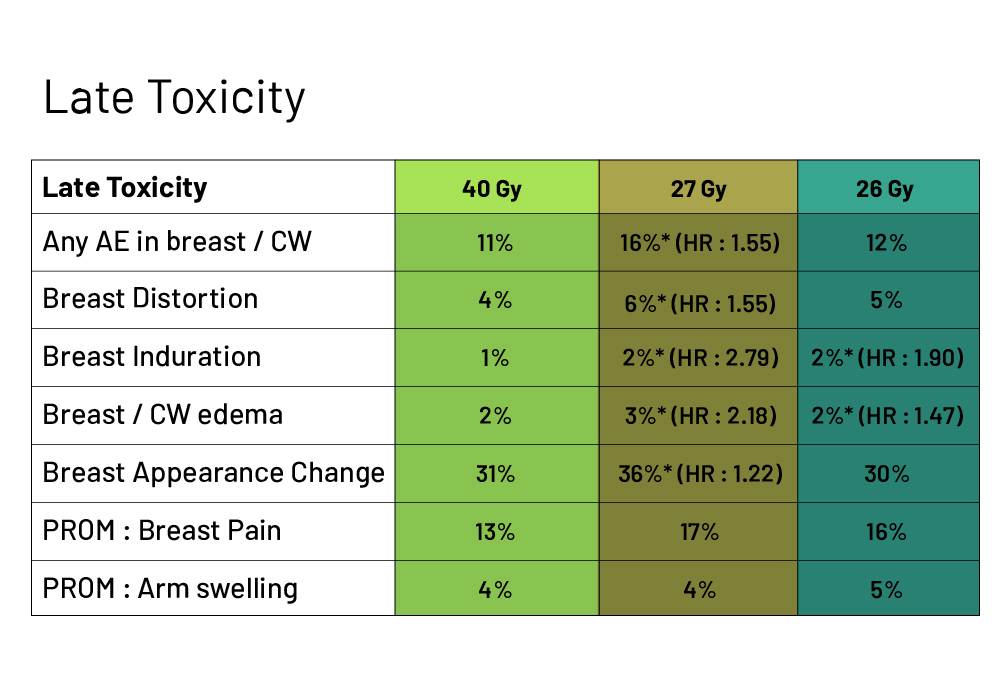
So the results were a game-changer and the whole world was looking to move on and now treating breast cancer with only 5 days as the treatment, but as radiation oncologists, we wanted the data to mature to incorporate it routinely.
Currently, the whole world is gripped with Covid-19 pandemic. Amidst the pandemic and community spread in India, patients are unable to travel for treatment due to lockdown, and there was a compromise in the treatment for cancer similar to Europe and the US.
So, on the basis of the 5-year result, the USA has come up with a set of guidelines that allows administering the Fast Forward protocol, with the current situation being a good time to enforce it on the patients.
It is beneficial to patients because the treatment gets over in 5 days, travel time and cost is reduced, and there are lesser interruptions.
It is beneficial from the hospital’s perspective because the patient visits reduce, the use of PPE kits are lesser, and the treatment can be delivered in 5 days which increases the capacity to take up more patients on the machines and reduces the running costs. Resources such as electricity and water can also be saved, thereby achieving breakeven in a high-volume centre. This makes it possible for the hospital to treat more patients and reach break even earlier.
Now that we know about Fast and Fast Forward regimens and the guidelines to incorporate it in Covid-19 situation, the question is – are we ready to incorporate this as a routine treatment for breast cancer in Indian scenario in the post-pandemic era?
In India, we are at risk to incorporate Fast Forward regimens without Indian data. In this regard, institutions like Tata Medical Center in Kolkata, AIIMS and CMC Vellore have come up with a phase 1 and phase 2 trials to test the ultra hypofractionation in Indian scenario, and the objective is to set up Indian data. If you compare to the Fast Forward patient profile, here the selection of the patient profile was much more with the higher grade, with MRMs, with known positives, supraclavicular radiations included and locally advanced diseases. So, this would be apt for the Indian scenario, but we should wait for our data to come up and mature and prove equivalent to the Western world.
Until that time, we have 10-year mature data of Fast Forward study, and we should not routinely use ultra hypofractionation schedules in the Indian scenario. However, in COVID 19 situation, we should use it with utmost care after informed consent to select the low-risk patients, node negative, ER positive and BCS patients.

